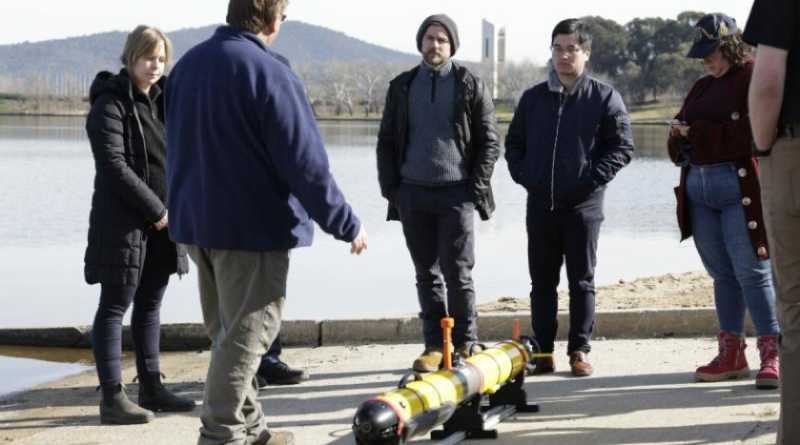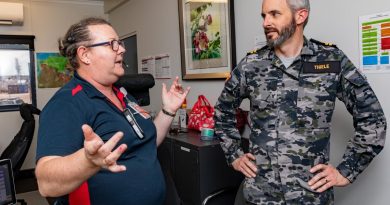Upskilling in autonomous vessel technology

As Navy leads the way in autonomous vessel development, aiming to boost Australia’s reach, efficiency and lethality while reducing risks to personnel and the environmental impact, those responsible for ensuring compliance have taken a hands-on approach to understanding the technology.
CAPTION: Staff from the Australian Maritime Safety Authority, Naval Materiel Seaworthiness Assurance Agency, Navy Safety and Environment, and the Australian Naval Classification Authority take part in the Principles of Autonomous Maritime Systems Course in Canberra. Story by James McPherson and Rachel Horne.
The Defence Seaworthiness Regulator is ensuring the regulatory environment keeps pace with technological progress and that any new system is compliant with domestic and international regulations.
Adopting a ‘learn by doing’ approach, staff from the Regulator’s Office have been upskilling in autonomous vessel technology with the assistance of AMC Search, a division of the Australian Maritime College.
Twenty-two personnel from the Seaworthiness Regulator and peer regulators, including the Australian Maritime Safety Authority, have completed the three-day Principles of Autonomous Maritime Systems Course, culminating in supervised operations on Canberra’s Lake Burley Griffin.
AMC Search’s Manager for Defence, Autonomous Systems, Engineering and Consultancy, Chris White, said the course provided an introduction for those who needed to understand the technologies, but might not directly be operating the equipment.
“For any party working with, or around, Defence’s use of autonomous systems, it helps to have a common language and understanding of capabilities and limitations,” Mr White said.
“This course provides classroom instruction and practical hands-on experience with deploying, operating and recovering multiple autonomous systems, so people learn how to do that safely and in accordance with all regulatory requirements.
“With that understanding, the Regulatory Office is much better placed to consider any additional compliance obligations that may need to be imposed in the Defence jurisdiction.”
Acting Deputy Director Safety in the Regulatory Office Kylie Austin stressed the importance of regulators knowing the context of vessel operations.
“Defence is operating the highest end of technological capabilities in challenging environments,” Ms Austin said.
“For us to effectively regulate these vessels, we need to understand the safety and environmental hazards and risks, and be able to identify what the reasonably practicable mitigations are.”
The course was attended by personnel from the Australian Naval Classification Authority, the Naval Materiel Seaworthiness Assurance Agency, Navy Safety and Environment, and the Australian Maritime Safety Authority.
“The regulatory environment for autonomous vessels is complex, with multiple regulators and organisations involved,” Ms Austin said.
“It’s great for everyone across the autonomous vessel regulatory ecosystem to conduct joint activities so we can build the relationships that allow us to successfully tackle the challenges ahead.”
.
.

.
.





